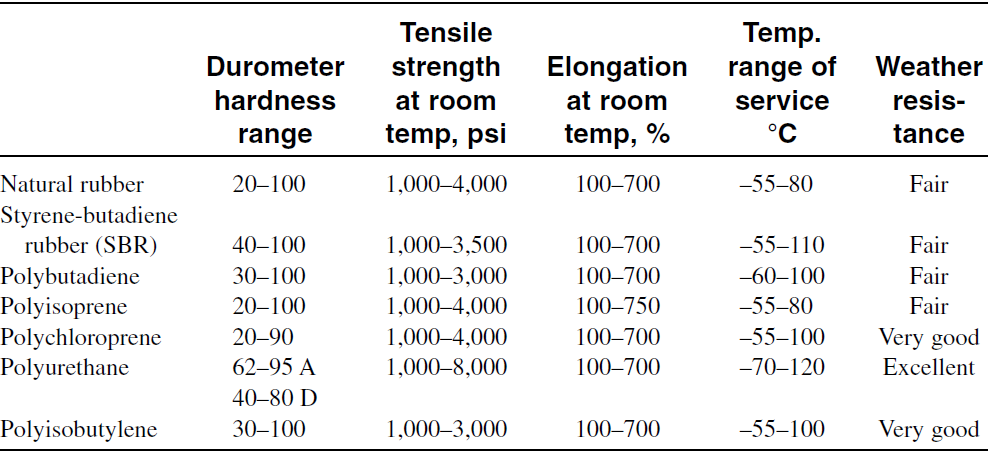
SYNTHETIC RUBBER
 المؤلف:
sami matar & Lewis. F. Hatch
المؤلف:
sami matar & Lewis. F. Hatch
 المصدر:
Chemistry of PETROCHEMICAL PROCESSES
المصدر:
Chemistry of PETROCHEMICAL PROCESSES
 الجزء والصفحة:
p 350
الجزء والصفحة:
p 350
 29-9-2017
29-9-2017
 1126
1126
SYNTHETIC RUBBER
Synthetic rubbers (elastomers) are long-chain polymers with special chemical and physical as well as mechanical properties. These materials have chemical stability, high abrasion resistance, strength, and good dimensional stability. Many of these properties are imparted to the original polymer through crosslinking agents and additives. Selected properties of some elastomers are shown in Table 1.1.
Table 1.1 Selected properties of some elastomers

An important property of elastomeric materials is their ability to be stretched at least twice their original length and to return back to nearly their original length when released.
Natural rubber is an elastomer constituted of isoprene units. These units are linked in a cis-1,4-configuration that gives natural rubber the outstanding properties of high resilience and strength. Natural rubber occurs as a latex (water emulsion) and is obtained from Hevea brasiliensis, a tree that grows in Malaysia, Indonesia, and Brazil. Charles
Goodyear (1839) was the first to discover that the latex could be vulcanized (crosslinked) by heating with sulfur or other agents. Vulcanization of rubber is a chemical reaction by which elastomer chains are linked together. The long chain molecules impart elasticity, and the crosslinks give load supporting strength. Vulcanization of rubber has been reviewed by Hertz, Jr. Synthetic rubbers include elastomers that could be crosslinked such as polybutadiene, polyisoprene, and ethylene-propylene-diene terepolymer.
It also includes thermoplastic elastomers that are not crosslinked and are adapted for special purposes such as automobile bumpers and wire and cable coatings. These materials could be scraped and reused.
However, they cannot replace all traditional rubber since they do not have the wide temperature performance range of thermoset rubber. The major use of rubber is for tire production. Non-tire consumption includes hoses, footwear, molded and extruded materials, and plasticizers.
Worldwide use of synthetic rubber (not including thermoplastic elastomers) in 1997 was approximately 10.5 million metric tons. Natural rubber use is currently about 6 million tons/year and is expected to grow at annual rate of 3.3%. Thermoplastic elastomer consumption, approximately 0.8 million tons, is forecasted to reach over one million tons by the year 2000.
 الاكثر قراءة في كيمياء البوليمرات
الاكثر قراءة في كيمياء البوليمرات
 اخر الاخبار
اخر الاخبار
اخبار العتبة العباسية المقدسة


